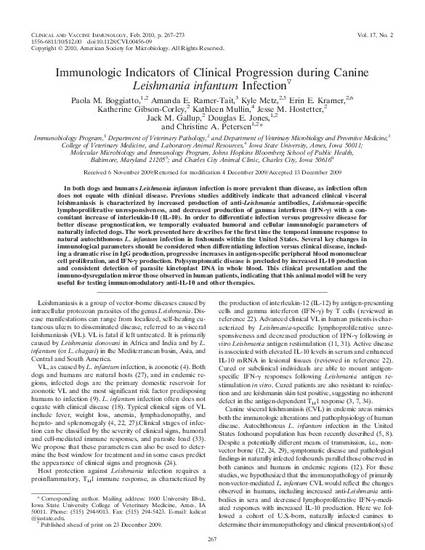
CLINICAL AND VACCINE IMMUNOLOGY, Feb. 2010, p. 267–273; doi:10.1128/CVI.00456-09
In both dogs and humans Leishmania infantum infection is more prevalent than disease, as infection often does not equate with clinical disease. Previous studies additively indicate that advanced clinical visceral leishmaniasis is characterized by increased production of anti-Leishmania antibodies, Leishmania-specific lymphoproliferative unresponsiveness, and decreased production of gamma interferon (IFN-γ) with a concomitant increase of interleukin-10 (IL-10). In order to differentiate infection versus progressive disease for better disease prognostication, we temporally evaluated humoral and cellular immunologic parameters of naturally infected dogs. The work presented here describes for the first time the temporal immune response to natural autochthonous L. infantum infection in foxhounds within the United States. Several key changes in immunological parameters should be considered when differentiating infection versus clinical disease, including a dramatic rise in IgG production, progressive increases in antigen-specific peripheral blood mononuclear cell proliferation, and IFN-γ production. Polysymptomatic disease is precluded by increased IL-10 production and consistent detection of parasite kinetoplast DNA in whole blood. This clinical presentation and the immuno-dysregulation mirror those observed in human patients, indicating that this animal model will be very useful for testing immunomodulatory anti-IL-10 and other therapies.
Available at: http://works.bepress.com/jack_gallup/1/

Copyright © 2010, American Society for Microbiology. Used by permission.